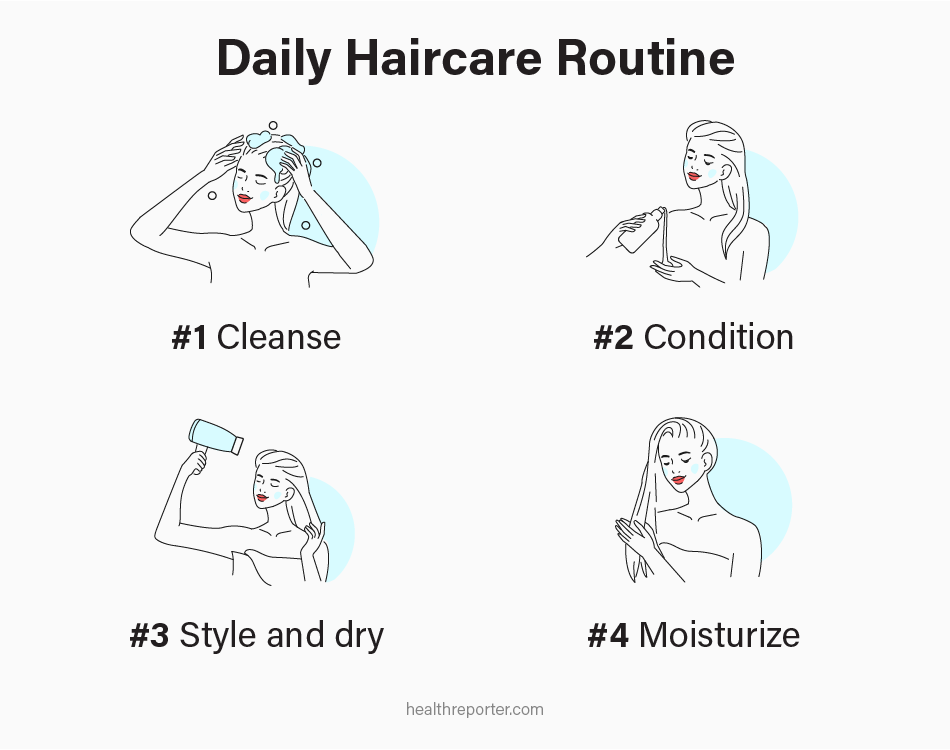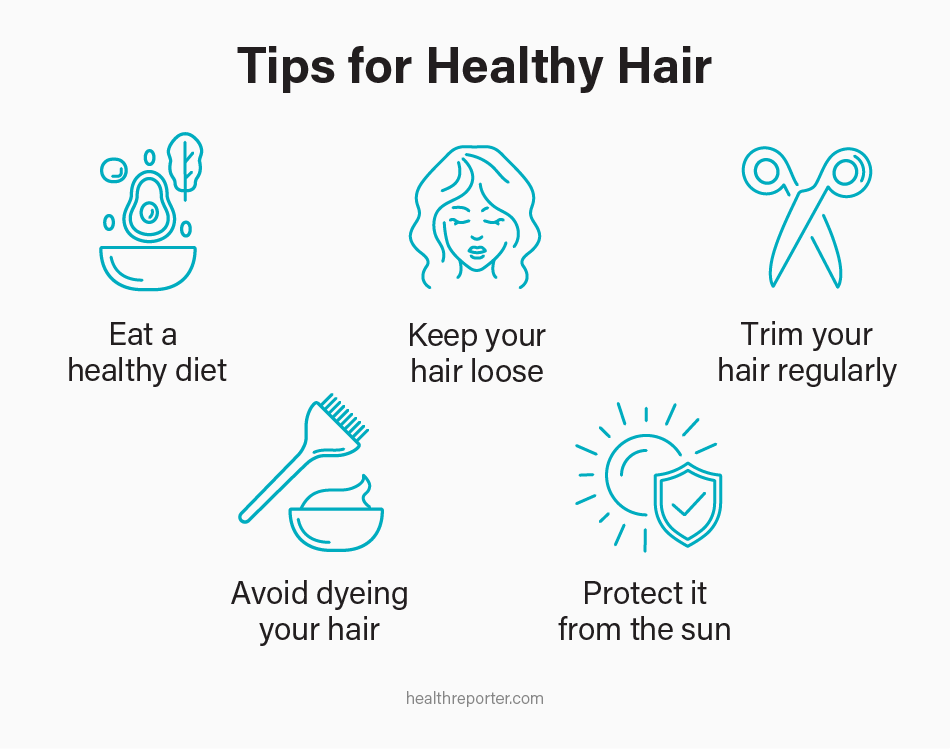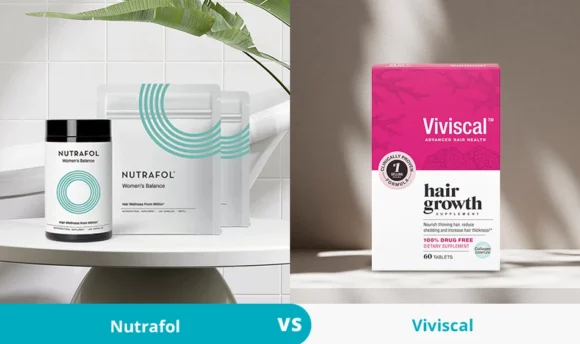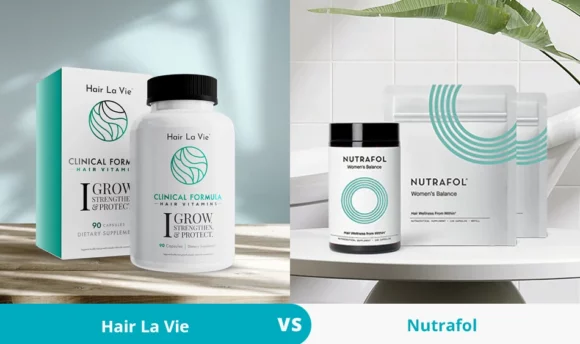Haircare 101: Building a Routine
Are you on a journey to have healthier hair? Here’s everything you need to know about haircare.

If you’re new to the world of haircare, the thought of creating a haircare routine from scratch can be intimidating.
With so many online tutorials and hundreds of products to choose from, picking the right ones for you can feel impossible.
We’re here to make your job easy by providing you with all the essential information and easy-to-follow steps that will help you build a routine that will make your hair look its best.
How to Start a Haircare Routine?
Starting a haircare routine involves understanding your hair’s unique needs and concerns, so identifying your hair type and specific issues is an important first step.
Doing so will help you tailor a routine that helps you address your unique hair challenges effectively.
These tips will help you get started:
Know your hair type
Before crafting a care regimen, you can determine your hair type based on its texture and thickness.
Common hair types include:
- Straight hair: Straight hair is easy to identify since it generally has a uniform texture and is sleek and smooth. Common issues for straight hair include greasiness and lack of volume.
- Wavy hair: Wavy hair lands somewhere in the middle of straight and curly and generally has a “C” or “S” shape pattern. People with this hair type tend to struggle with dryness and frizziness.
- Curly hair: Curly hair includes loose, medium, and tight curls and includes a wide variety of textures and curl patterns. Like wavy hair, curly hair tends to be dry and prone to tangles and knots.
- Coily/kinky hair: Coily and kinky hair is tightly coiled or exhibits a zig-zag shape pattern. It requires frequent and intensive moisture and is prone to frizz.
Identify your hair concerns
Depending on your hair type and how well you’ve cared for your hair in the past, you may be experiencing any of the following hair concerns:
- Damaged and dry hair
- Oily scalp
- Stalled hair growth
- Dandruff or flaky scalp
- Frizz and flyaways
- Split ends
- Lack of volume
- Hair thinning or hair loss
Identifying your specific concerns will play an important role in crafting your new routine.
You’ll want to buy products and create a routine that is specifically designed to help you address these problems, putting you back on track to having your dream hair.
Daily Haircare Routine

Ready to get started on building your new routine? Here are some of the fundamental steps to follow.
#1 Cleanse
The first step in your new beauty regime is properly cleansing your hair. This is your opportunity to remove any buildup of styling products, your hair’s natural oils, and dirt and generally give your hair a much-needed refresh.
This step is also essential for improving the health of your scalp, as it eliminates excess oils, helping to reduce dandruff and prevent clogged pores that could negatively affect your hair growth.
There is no ideal length of time to go between washes, as how often you should wash your hair can be affected by things like age, hair type, and even ethnicity.
For example, postmenopausal women are likely to notice a reduction in oil production and need to wash their hair less frequently.
Likewise, individuals with curly and coily hair, who generally struggle with dryness, should aim to wash their hair less frequently than their straight-haired counterparts.
That being said, a good rule of thumb is to wash every 2–4 days regardless of your type of hair and reduce frequency if you notice your hair drying out.
Dry shampoo is a great product to use between washes to help absorb oils and leave your hair looking fresher if you struggle with oiliness.
#2 Condition
The next step is to condition your hair. When it comes to conditioners, there are plenty of products to choose from for your specific hair goals.
For example, you may choose a conditioner with ingredients designed to moisturize dry hair, repair damage, protect colored hair, or create volume.
There are also conditioners created for each of the hair types, like conditioners for wavy hair, which are full of nourishing natural ingredients like argan oil and shea butter.
Curly and coily-haired individuals may also opt to apply a leave-in conditioner to their wet hair post-wash to lock even more moisture into their locks, which are prone to dryness. Just remember that a little goes a long way!
#3 Style and dry
The methods that you use to dry and style your hair can have noticeable long-term effects on your overall hair health.
For example, avoiding heat by rocking your natural hair and air-drying instead of using your hair dryer are great places to start.
It’s also important to detangle your hair carefully if you struggle with split ends. Leave-in conditioners have lubricating ingredients that make all the difference in tougher cases.
You can also opt to wear protective hairstyles, which can be especially helpful for individuals with curly and coily hair, as they shield hair from environmental stressors and remove the need for damaging straightening treatments.
If you do decide to use heat on your hair, make sure to use a heat protector beforehand to maintain moisture and prevent frizz.
#4 Moisturize
The last step to having healthy hair is finishing off your routine with a lightweight hair oil.
Applying oils to the ends of your hair can help lubricate the shaft to prevent breakage at the hair tips and make all the difference in managing frizz throughout the day.
Weekly Hair Treatment
If you want to take your hair regimen to the next level, try using the following treatments once per week.
Deep condition
One of the best products for repairing damage and providing intense hydration for healthy and shiny hair is a deep conditioner, either in the form of a hair mask or oils.
There is more than one way for you to deep condition hair, and you may want to experiment with different methods until you find one that best provides the results you’re looking for.
But unlike your regular conditioner and hair oil, deep conditioner products are meant to be left on for a few hours or even overnight, which will ensure your hair takes on and locks in all the moisture and nutrients.
Scalp massage
Whether you want to prevent hair loss or improve your hair’s natural growth, scalp massages can help.
You have the option of using either your fingers (the tips and not your fingernails, which can damage the hair follicles) or a derma roller, which allows you to self-administer micro-needling to improve collagen production on the scalp.
Whichever you decide, use your utensil in combination with natural oils such as lavender oil or rosemary oil, which are proven to stimulate hair growth.
Tips for Healthy Hair

Keeping your hair healthy happens not just in the bathroom. These tips, including holistic lifestyle changes, will help you reach your hair goals faster.
#1 Eat a healthy diet
Healthy hair is made, in part, in the kitchen. This is because diet plays an important role not only in increasing hair growth but also in improving the strength and shininess of your hair.
Eating a well-rounded diet full of fruits and vegetables, which are high in essential vitamins and minerals, and lean proteins, seeds, nuts, fish, and eggs for their high protein and fat content, will help you get all the nutrients you need for healthy natural hair.
Individuals who struggle to maintain a well-balanced diet may also consider supplementation with hair-specific vitamins to prevent deficiencies.
#2 Trim your hair regularly
Most hair experts recommend getting a trim every 3–4 months. Doing so helps prevent split ends, which is important because split ends are more prone to additional breakage.
If you struggle with stunted hair growth and often feel like your hair is hard to manage, infrequent trims could be the cause.
#3 Avoid dyeing your hair
Both dyeing and bleaching involve chemical processes that can strip the hair’s natural oils and destroy its protein structure, leading to dryness and damage.
Bleaching hair also increases its porosity, meaning that the outer layer has been compromised, and it’s more vulnerable to damage and breakage. Because of this, simple things like over-shampooing or aggressive brushing can leave your hair worse for wear.
For this reason, it’s best to avoid bleach and dye altogether or opt for more low-maintenance styles like balayage, which don’t need monthly updates.
#4 Protect it from the sun
Your hair can be damaged by too much time in the sun, much the same as your skin can.
The UV rays from the sun have been shown to break down the protein structure of the hair, damage the outside layer of the cuticle, and suck moisture out of your stands.
All of these changes can greatly impact the health of your hair, making it lose its elasticity and leaving it more prone to breakage.
When spending time out in the sun, consider wearing a hat or scarf to cover it, or pick up a hair oil with built-in UVA and UVB protection.
#5 Keep your hair loose
The tension of repeated wearing of pulled-back hairstyles on hair cuticles has been shown to cause traction alopecia, a condition that leads to hair loss, especially around the face.
Depending on the type of hair elastic you use, wearing your hair up can also cause breakage wherever your elastic rubs against your strands.
Striking a balance between wearing your hair up and down and using hair-friendly accessories like looser scrunchies or alligator clips can help prevent hair style-related damage.
A Word From a Trichologist
You’d be surprised at how quickly you can see results from a new hair routine that has been tailored to your specific hair type and concerns.
Getting started doesn’t have to be hard. Simply pick up a gentle shampoo and a suitable conditioner for your hair goals and unique type of hair. Add a weekly deep conditioning treatment for extra care.
When buying products, look for ingredients that benefit your hair type. Seek natural oils like argan or coconut oil for curly hair and clarifying ingredients like tea tree oil for oily hair. Avoid sulfates, parabens, and silicones for optimal hair health.
Remember, simple changes like allowing your hair to air dry to avoid heat, using dry shampoo to extend the time between washes, and eating a balanced diet can make all the difference in seeing results.
FAQs
Alongside gentle cleansing and conditioning, make sure to incorporate hair growth oils like rosemary oil or castor oil into your regimen. Additionally, look for shampoos and conditioners that contain ingredients such as biotin, keratin, and proteins, as these help to nourish the hair and promote strong, healthy hair growth.
There is no one-size-fits-all for hair products. Instead, you will need to shop according to your hair type and unique hair concerns, though generally, it’s best to use products with a mostly natural ingredient list and avoid sulfates, parabens, and silicones.
To keep dry or damaged hair looking healthy, it’s important to use a combination of hydrating and repairing hair products to keep it well-nourished. Also, consider minimizing shampooing, allowing your hair to air dry instead of blow-drying, and getting regular trims.
Conclusion
When creating a new care routine for your hair, it’s important to personalize it based on your unique hair goals and hair type.
All routines follow more-or-less the same steps, including shampooing hair, conditioning it, styling it (ideally without heat), and adding oil to the ends to lock in shine.
But depending on your hair type and whether you want more volume, less frizz, or to repair the damage, you will want to choose different hair products made specifically for that purpose.
There are also a number of holistic changes and care tips, like getting regular trims and doing weekly scalp massages, that can help you maximize growth and prevent hair loss.

















































 Select your language:
Select your language: 








